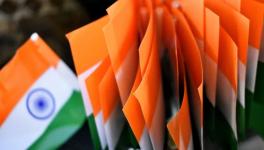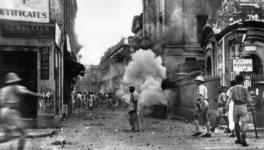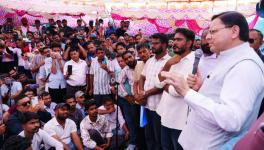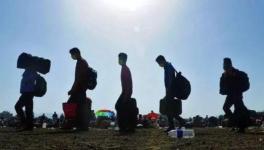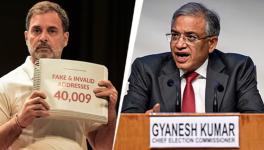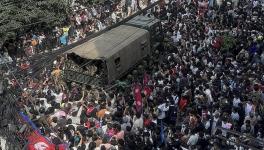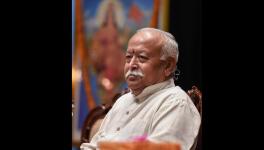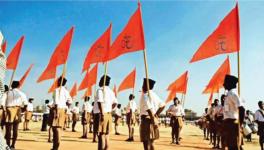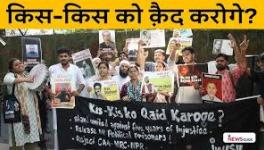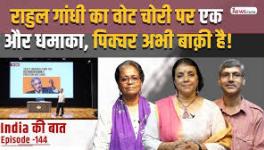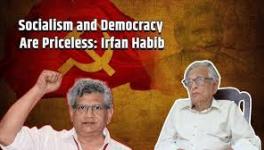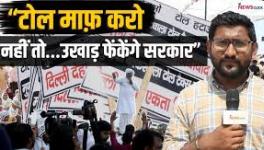Ayodhya Dispute: Different Parties, Same Anthem
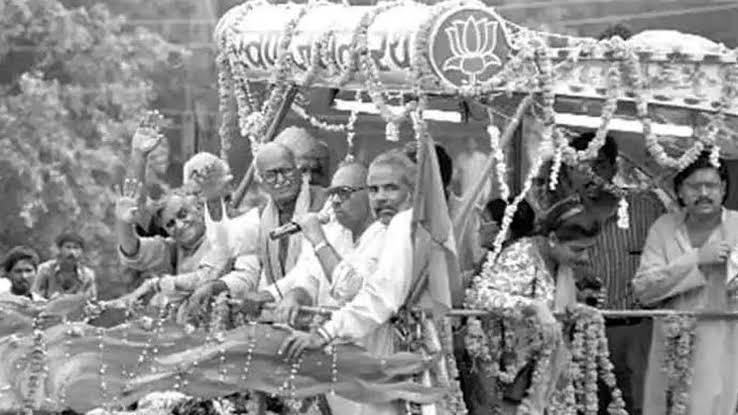
This Diwali, the Yogi Adityanath government in Uttar Pradesh spent more than Rs 1.33 crore to light more than 5.5 lakh earthen lamps at Ayodhya. The aim was to demonstrate to the world that the Hindus revere the god Rama.
Twenty six years ago, on the evening of December 6, 1992, Hindu families living in Ayodhya had chosen to celebrate a “second” Diwali by lighting lamps and candles outside their homes. They were celebrating the bringing down of the Babri masjid.
To those who observed the events at Ayodhya unfold, it was obvious that this celebration was orchestrated, for many villagers who lived around the Babri masjid at the time, when asked subsequently, said they had been told to do so by Vishwa Hindu Parishad activists.
The extent of orchestration that took place around every major event prior to this denouement has been extensively documented. Then Prime Minister Rajiv Gandhi’s ham-handed efforts to win over the Hindu vote by allowing kar sewa in 1988, the starting of his electoral campaign from Faizabad (now renamed), the district headquarters of Ayodhya, as well as his overturning of the Supreme Court order in the Shah Bano case unleashed the rise of the militant right wing Hindutva brigade.
Several kar sewaks have gleefully admitted, many years later, of course, how the destruction of the Babri masjid was a meticulously planned operation and also, how they had had no hesitation in bringing it down. This was not the case on December 6, 1992, when a large contingent of media had collected at Ayodhya to watch what we were told was going to be another kar sewa outside the disputed area.
There was a sense of foreboding in our minds because of the several lakh kar sewaks who had gathered there. Some photographers who had holed up in nearby dharmashalas warned that some kar sewaks had told them in confidence about having received training in the use of arms and also on how to bring down the masjid.
The writer was part of the large media contingent which arrived on December 5 in Ayodhya, which in those days remained a largely sleepy and quiet town, whose residents admitted to being disturbed by all these political goings on. We arrived at the Babri masjid early on the morning of December 6. Our focus then was to try and locate the place of, we presumed, the next kar sewa, where the earlier shilanyas (laying of foundation) had taken place. Many, including myself, clambered up the steps of the “Sita ki rasoi” building to find a vantage spot on its rooftop from where we could get a view of the kar sewa, which was expected to start at 10 AM.
Suddenly, a group of kar sewaks arrived on the roof top and began indiscriminately beating up journalists with video cameras. The beatings were so severe that one photographer suffered a broken jaw while another had a shoulder dislocated. There were teeth smashed, jaws broken, faces bruised and bleeding. Their cameras had been smashed to smithereens. It happened like a commando operation, well planned, swift and deadly. Plainclothes cops watched this dastardly act. No one interfered or offered assistance.
The VHP goons disappeared as swiftly as they had arrived, melting into the growing crowds gathering around the barricaded Babri masjid. A large police contingent had gathered to control the surging crowd and just next to the masjid, to the right, senior police officials had set up a makeshift control room. But they remained mute witnesses to the “unexpected” turn of events, as did all of us.
A makeshift platform had been created to the left of the Babri masjid. Senior leaders of the Bharatiya Janata Party (BJP) including future deputy prime minister LK Advani, Murli Manohar Joshi, then president of the party, and Uma Bharti, then a first-time Member of Parliament in the Lok Sabha, were stationed in this building. I heard Bharti exhort the kar sewaks to bring down the mosque. “Ek dhakka aur do, Babri masjid tod do (Give it another shove, break the Babri mosque),” she shouted into a loud speaker. Other BJP leaders were also present and spoke the same militant language, though they subsequently denied having done so.
The problem in essence was that the BJP, the Rashtriya Swayamsevak Sangh’s militant outfit the Vishwa Hindu Parishad or VHP, and the hawkish student outfit Bajrang Dal had succeeded in convincing these young men that Babri masjid was built on the site where Rama was born, without being able to provide a shred of evidence to back their claim.
By 11 AM, several kar sewaks had breached the barricade and by 4:59 PM, the third and largest dome of the masjid had been reduced to rubble. As the first dome started to be broken, we saw plumes of smoke rising from beyond the platform, atop which the BJP leaders were watching with a sense of exultation. From their vantage point, the leaders could see the kar sewaks using pickaxes, iron rods and shovels to bring down the domes.
Later, some villagers said that a few Muslim homes had been burnt in their neighbourhood by “outside elements” but it is difficult to substantiate these claims especially since by 5 PM, there was a mad scramble among the journalists to rush to Faizabad from where we would use the sole teleprinter at the local telegraph office to file our stories.
During the drive to Faizabad, a large police force was checking every vehicle. We were in a daze after witnessing this frenzied mob violence, and no one had the strength to ask the police, who were checking our vehicles, why they had not made any attempt to control the mobs earlier in the day.
The silent complicity of the establishment to this Hindu sentiment manifested again the next morning when the entire Babri masjid area was cordoned off from the public, including the media. Overnight, a portion of the land belonging to the Archaeological Survey of India was taken over by the Hindutva brigade who levelled it and built a makeshift structure. Within it, Ram idols were placed and worship was allowed to take place there before the arrival of the Rapid Action Force.
Little did we realise, as each of us sat down to file our stories that Babri masjid's demolition would prove a turning point in politics and its implications would continue to resound over the entire spectrum of our politics in years to come. Two thousand Indians died in the communal riots that followed the razing of the masjid and many believe, the secular fabric was permanently riven.
Even today, the current Prime Minister Narendra Modi continues to speak the same language that LK Advani spoke when he undertook his controversial rath yatra in 1990, with Modi then a small-time leader as his charioteer.
Advani, in one of his speeches, told the large crowds that had greeted him during the course of the yatra that he had undertaken it not “to build a [Hindu] vote bank. No, I am building a patriotic vote bank, a nationalistic vote bank.” [Listen to the speech here.]
This Hindu vote bank politics is the dominant theme in Modi’s quest to become chief minister and then prime minister. As the prime minister, Modi has repeatedly played the nationalistic card and repeatedly referred to his party’s promise of building a Ram temple in Ayodhya [at the site of the Babri mosque].
For Modi, winning the 2014 elections marks the culmination of a shrewd campaign to reach the prime ministerial post just as the destruction of the Babri masjid was the culmination of a six-year divisive campaign spearheaded by the BJP and its affiliates. And it has paid political dividends many times over. Many leaders have described it as a setback to secularism but the BJP saw their Lok Sabha seats increase from 2 in 1984, with their Lok Sabha tally ending up at 303 seats in 2019.
Modi is seen as a decisive leader but he has followed the path laid by former Congress prime minister Narasimha Rao, who failed to take any political initiative to end this dispute. Rao, it is said, went by the assurance of the chief minister of Uttar Pradesh at the time, Kalyan Singh. Singh had presented an affidavit to the Supreme Court in 1992 in which he had assured that he would ensure the Babri masjid would remain untouched. Even so, Rao did not only give the go-ahead to kar sewaks for December 6, 1992, he ignored the presentiments and warnings of his own Cabinet colleagues and other political leaders who had advised him not to go by the assurance.
The ball is now in the hands of the Supreme Court. The verdict of Babri masjid-Ramjanmbhoomi title suit is expected on November 15. But it is already quite clear that whatever the verdict may be, the Hindu outfits will be in no mood to obey it if it goes against their sentiments. Already, the VHP and other Hindu organisations have demanded, while the hearings were going on, that the Modi government bring in an ordinance to facilitate the construction of a Ram temple at the site where the Babri masjid once stood.
Probably witnessing this majoritarian sentiment, some Muslim intellectuals led by Lt Gen Zameer Uddin Shah have asked Muslims to forego their claims over the construction of a mosque on this disputed site, if they are assured that no other mosque will be touched in the country.
Advani had stressed in the early 90s that the Congress’ crass vote bank politics had to be combated by a strong ideological approach. The ideological approach he was referring to was not the promotion of a powerful economic or social agenda, but rather to follow the divisive Hindutva policy.
All eyes are on the Supreme Court in the hope that the verdict will ease the obvious discomfort and horror that a large majority of Indians have felt over this discordant issue. If not, then the 3.3 lakh diyas that the Yogi Adityanath government lit along the river Sarayu in Ayodhya will be pomp and show of a different order altogether.
Rashme Sahgal is an independent journalist. The views are personal.
Get the latest reports & analysis with people's perspective on Protests, movements & deep analytical videos, discussions of the current affairs in your Telegram app. Subscribe to NewsClick's Telegram channel & get Real-Time updates on stories, as they get published on our website.









